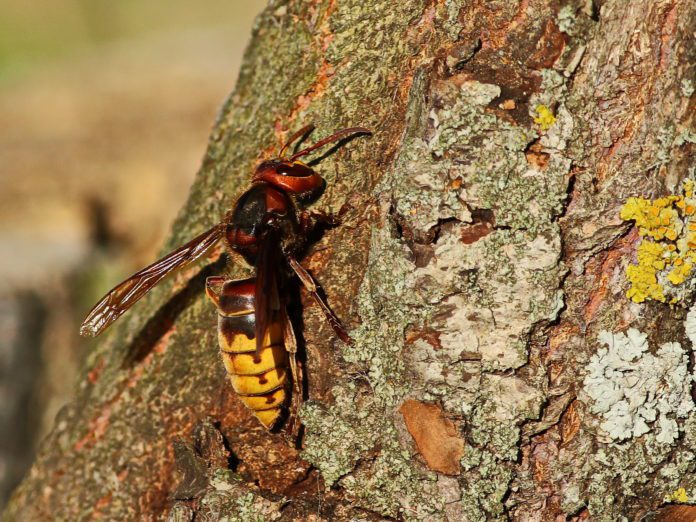Amid an already trying 2020, news sources have recently reported that a species of predatory insect has breached North America – the Asian giant hornet, disturbingly nicknamed the ‘murder hornet.’
Wyatt Hoback, associate professor of entomology and plant pathology at Oklahoma State University in Stillwater, has answers to your questions regarding the hornet, its presence in the U.S. and its threat to humans and other insects.
What, exactly, is the Asian giant hornet and how did it get its nickname?
The Asian giant hornet is a non-native species with a unique biology. They are large, predatory insects. Like all bees and wasps, they will aggressively defend their nests when they perceive a threat. These insects are predators and feed on other insects. Because of their size, they need to capture lots of prey. The problem for the U.S., Europe and parts of the world where these hornets are native is that people have introduced European honey bees.
The hornets get their common name ‘murder hornets’ from attacking bee hives and killing all the workers so they can take the larvae and resources to feed their own offspring. 30 giant hornets can kill 30,000 domestic bees.
What threat does the hornet pose to humans?
Because of their size, giant hornets have a lot of venom and have been characterized as having among the most painful stings in the world. The attacks can be fatal if a person is hypersensitive or if the person is stung multiple times.
What threat does the hornet pose to natural ecosystems generally?
Whenever a species establishes outside of its native range, it often leaves behind the natural checks like disease, predators and other factors that limit its population. When a species establishes, it can cause big effects to the ecosystem and to the economy that relies in part on that ecosystem.
Where have these hornets been spotted in North America, and how did they get here?
When a bee keeper in Washington State discovered a bee hive that had been attacked [in 2019], officials began an aggressive search. One nest was discovered and destroyed. A single specimen of giant hornet was also discovered in Vancouver, Canada, which was determined to be from a different nest. No additional sightings have occurred since 2019, and it appears that for now, the Asian giant hornet is not established in the U.S. We do have other non-native wasps and yellow jackets here, but it does not appear that murder hornets have established.
We are not sure how the colony or two colonies got to the U.S.; other species have stowed away on shipments, allowing German yellow jackets, European hornets and European paper wasps to establish in the U.S.
Are the hornets well-suited to an Oklahoma climate?
We have not found any of this species in Oklahoma, but because it is native to central Asia, our climate would support it. People should keep an eye out, but also learn to recognize native species that provide really valuable services. Native hornets eat pest insects including caterpillars. Although they have similar coloration, native species are much smaller.
This fall, large solitary wasps will emerge; these are cicada killers. Although the name sounds intimidating, they are not aggressive, have a very weak sting and help to limit the number of cicadas that feed on plant roots while immature.
Do Americans need to be presently worried about these insects, or is this a case of overblown coverage?
Right now, the national media has picked up an older story and is overblowing the coverage. There is some amazing footage online including what happens when the giant hornets attack European honey bees, how Japanese honey bees defend themselves by roasting the attacker alive … and then there is “Coyote Peterson,” a Youtuber who reacts very badly to making various insects sting him, including the giant hornet.
In my General Entomology class, I reward students by letting them watch me get stung. It illustrates how stinging insects are not out to get us and how a person can react to a sting.
It is important for people to keep an eye out for insects of all kinds and to learn to recognize potentially dangerous ones while also appreciating the vital link these insects play in providing ecosystem services.
























